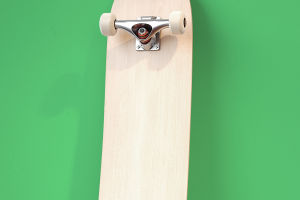Should toothpaste be wetted with water before brushing? The main function of toothpaste is to clean the teeth. It doesn’t matter whether you brush your teeth with water or not. You can choose according to your personal preference.
During the process of brushing teeth, the mouth will continue to secrete saliva, which can also play a role in moisturizing the mouth. Keep functional toothpaste away from water.
However, for some functional toothpaste, such as anti-allergic toothpaste, it’s better not to get water on them, so as not to damage the active ingredients.
Especially desensitizing toothpaste, because its ingredients are different from ordinary toothpaste, the price is generally high, and it is even more important to use it correctly.
The active ingredients of the desensitizing toothpaste will form a repair layer on the surface of the teeth.
To avoid destroying this active ingredient, it is better not to wet the toothbrush when using the desensitizing toothpaste.
Squeeze the toothpaste on a dry toothbrush and brush your teeth.
There is a more important issue that cannot be ignored than whether to wet the toothpaste before brushing your teeth, that is: after rinsing your mouth carefully, brush your teeth again.
By gargling, most of the residues, debris, sugar, and rinse and dilute acidic components, loose soft dirt, etc., and brush it to get twice the result with half the effort.
Brushing your teeth is not just about protecting your teeth, there are many more important things about brushing your teeth.
A study in the United States shows that serious dental plaque and oral bacteria problems will increase the risk of cancer death by 80%, and may reduce life expectancy by 13 years.
The Japanese Cancer Society once published a report showing the relationship between brushing habits and cancer:
People who brush their teeth more than 2 times a day are 30% less likely to develop oral cancer or esophageal cancer than those who brush their teeth once;
People who don't brush their teeth at all are 1.8 times more likely to develop cancer than those who brush their teeth once.
The survey found that the average toothbrushing time of some people is only 1 minute, and many people rely on the habit of picking up the toothbrush and rushing to get things done.
Many people have broken their toothbrushes like this!
Mistake 1: Brushing your teeth with cold water
Cold water can cause tooth pain in people with sensitive dentin, and it is not conducive to the active substances in toothpaste.
The main ingredients in toothpaste are abrasives and fluoride. Laboratory studies have found that the optimum temperature for these active ingredients to work is around 37 degrees Celsius.
Suggestion: It is best to use warm water close to your body temperature when brushing your teeth.
Mistake 2: Brushing too hard
Too much force when brushing your teeth, or brushing your teeth horizontally, may damage your teeth. Cause tooth wedge-shaped defect.
Suggestion: 200 grams of force is enough, about the same as the force of picking up a popsicle with your fingers, and use the force of your wrist instead of your arm to brush your teeth.
Mistake 3: Brushing your teeth sideways
On the one hand, horizontal brushing cannot remove the garbage in the gaps between the teeth, and it may also cause wedge-shaped defects in the root of the teeth, damage to the gums, and sensitivity to dentin.
Suggestion: The correct way to brush your teeth is to brush vertically along the gap between the teeth.
Mistake 4: Too little brushing time
Many people think that the purpose of brushing teeth is to remove food residues, but this is not entirely the case.
Rinsing your mouth with clean water can remove more than 90% of food residues. The purpose of brushing your teeth carefully is to eliminate dental plaque.
Plaque is a kind of colorless bacteria attached to the surface of the teeth and in the gaps of the gums. It is the culprit that causes dental caries and gum inflammation.
Suggestion: brush your teeth for no less than 2 minutes. Start from the front teeth and carefully brush vertically, especially the places that are easily overlooked, such as the gaps between the teeth and the inside of the teeth.
Mistake 5: Thinking that you need a big toothbrush to clean your teeth
Everyone's teeth are big or small. If the toothbrush is too big, it will not be flexible enough to perform tasks in the oral cavity. If the toothbrush is too small, it will not be able to clean a large area of the mouth.
Suggestion: Choose a toothbrush of the right size, the size of the brush head should be equal to the width of 2.5 to 3 teeth.


